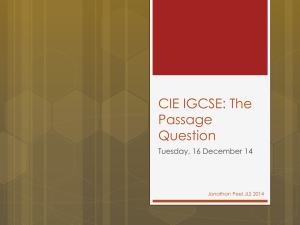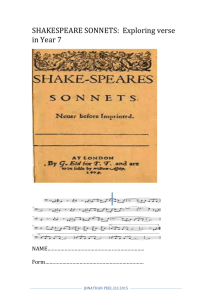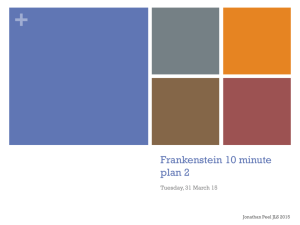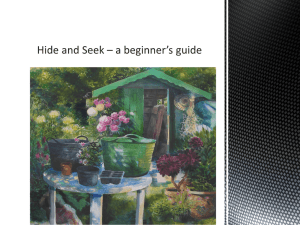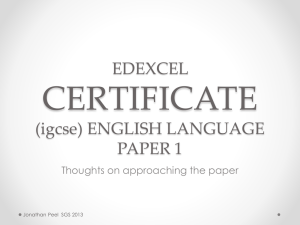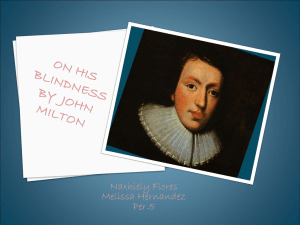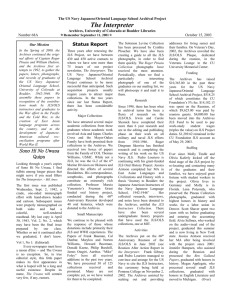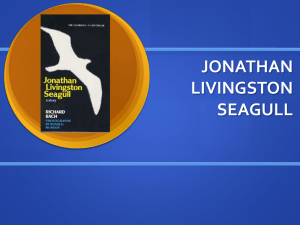PARADISE LOST IX
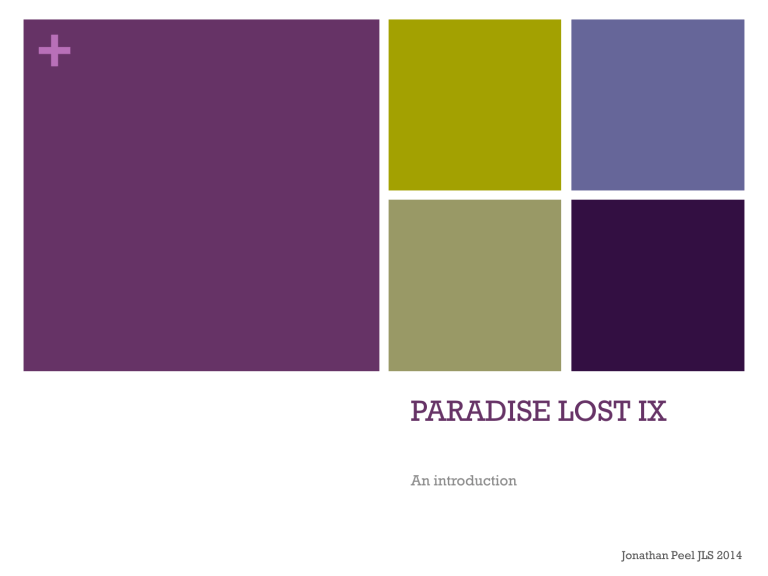
+
PARADISE LOST IX
An introduction
Jonathan Peel JLS 2014
+
FOCI
Jonathan Peel JLS 2014
The
Poem
The poetry
Milton in context
+
Milton: rebel?
1608-74
Born in reign of James 1 st – protestant King
Died in reign of Charles II
Supporter of Cromwell against Charles 1 st
Supported execution of King, annointed by God.
Jonathan Peel JLS 2014
+
That’s not all:
1643-5 Wrote “The divorce tracts” – essays advocating divorce: contrary to views of the Church and received with hostility.
Estranged from 1 st wife for three years, until she came and begged for forgiveness.
1644 Areopagitica argues for freedom of the press and the right of the individual for freedom. Also suggests that EVIL
SHOULD BE ENCOURAGED IN THE WORLD SINCE IT
HIGHLIGHTS GOODNESS BY OPPOSITION.
Jonathan Peel JLS 2014
+
TASK 1
Undertake some background reading and make notes on:
The trial of CHARLES 1 and the restoration that followed the commonwealth.
Milton’s support for regicide and the possible implications of this with regards to the portrayal of SATAN
The criticism of the Jacobean Kings as being arrogant tyrants.
Jonathan Peel JLS 2014
+
THE POETRY
An Epic in the model of Homer or Virgil (or Dante)
Written in unrhymed Iambic Pentameter
Blind, so composition was aural. Does this show?
TS Eliot says we need to read twice: once for sound and once for meaning
Based on long complex sentence structure and an individual attitude to language- Latin forms are common here – much subordination creates a lack of clarity at times. Occasional omission of the modal verbs in the past tenses.
Little punctuation is used – Milton intended it to assist when reading aloud, not to provide clarity of meaning.
Jonathan Peel JLS 2014
+
TASK 2
Remind yourself of the conventions of Iambic Pentameter and the various metrical feet: Iamb, Trochee, Spondee and so forth.
Have a look at some articles on the great Classical Epics –
The Iliad and the Odyssey, the Aeneid and most of all, a poem by the Greek poet Hesiod: The Theogeny. Why do you think Milton chose to write in epic form?
Jonathan Peel JLS 2014
+
The POEM
Satan
Argument
Feminism Book IX
Jonathan Peel JLS 2014
+
Argument
The whole poem presents an explanation for the “fall of man”.
Book 1&2 explores Satan’s motivation – revenge for humiliation and removal from Heaven
Books 4-8 explore Adam and Eve in Eden and prepare for
BOOKS IX and X which show the fall – the temptation of Eve, the eating of the forbidden fruit and the subsequent fall of
Adam.
In X the pair beg for mercy and are allowed to continue on
Earth, but the SIN has introduced death into the world.
Jonathan Peel JLS 2014
+
BOOK IX
Questions we will consider:
Relationship portrayed between Adam and Eve
Why does Eve ask to be allowed to garden alone and why does Adam let her go?
How is Satan portrayed? Is he in any way attractive?
How does the form of the poem highlight the moments of great importance?
Jonathan Peel JLS 2014
+
Feminism
When Milton was writing there were no issues with the portrayal of Eve
She seems to be responsible for the Fall of Man and seems to allow herself to be driven by her own innate Pride.
We will need to find alterative perspectives
Remind yourself of what features are usually seen in feminist criticism – we will need to apply some of these ideas.
Jonathan Peel JLS 2014
+
SATAN
According to William Blake, Milton was “of the Devil’s party”
Satan is an interesting portrayal: heroic in books 1&2 but less so by Book IX.
Interestingly, he has an awareness of his evil and recognises his own better feelings- Should we pity him? You will have to decide.
His portrayal is given with a huge amount of symbolism and imagery – the evil do not move in straight lines and we will look closely at his use of lies, half truths and rhetorical flourishes as he ensnares Eve. You will need to revise your repertoire of rhetorical and poetic devices.
Jonathan Peel JLS 2014
+
Sound… heard any good poetry lately?
Milton was blind by the time he wrote Paradise Lost.
He recited the poem to scribes
The poem is full of very complex syntax and potentially confusing representations of Standard English
Many think that you need to hear the poem to better understand it and to be aware of its beauties.
I have recorded a free version of the poem here:
sound files Paradise Lost ix
Jonathan Peel JLS 2014
